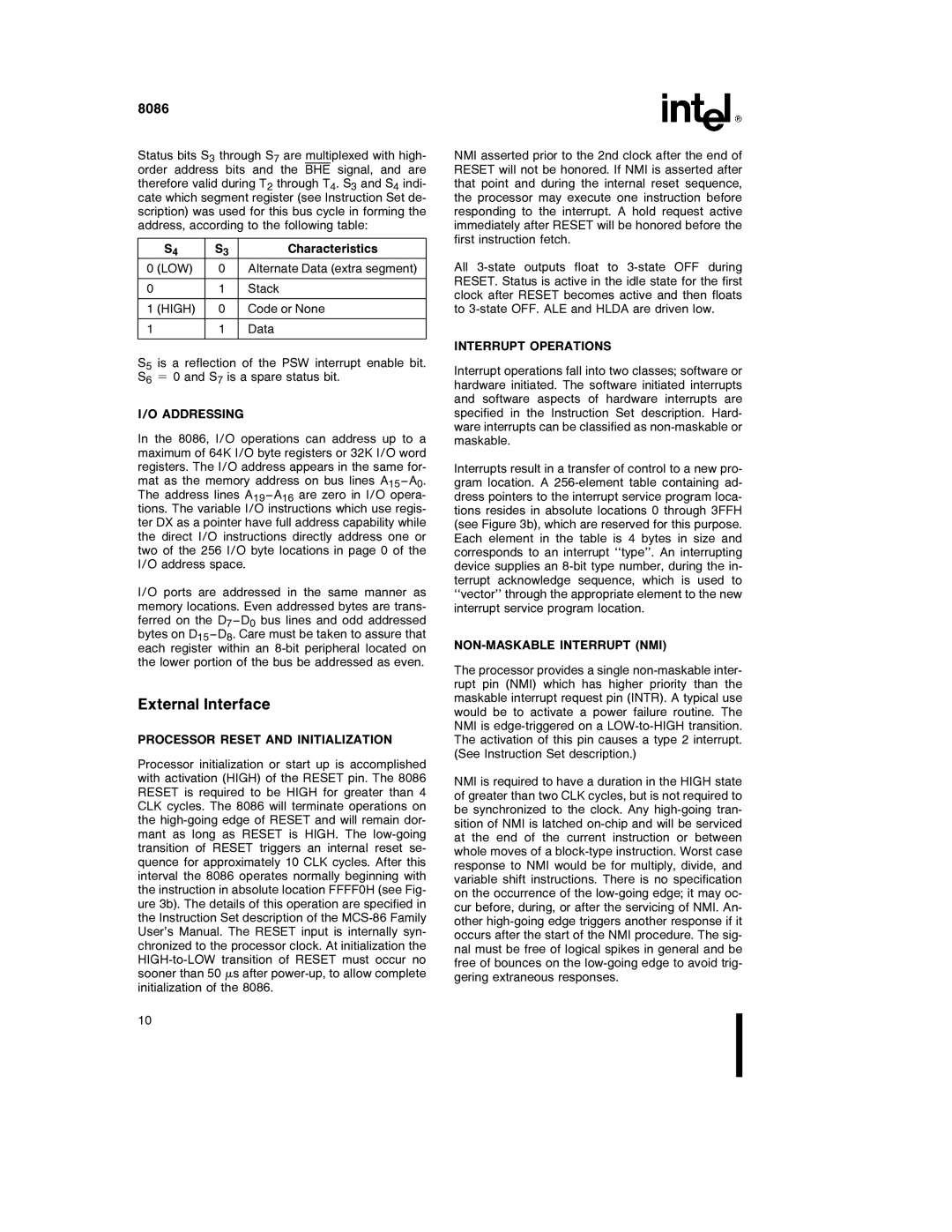
8086
Status bits S3 through S7 are multiplexed with high- order address bits and the BHE signal, and are therefore valid during T2 through T4. S3 and S4 indi- cate which segment register (see Instruction Set de- scription) was used for this bus cycle in forming the address, according to the following table:
| S4 | S3 | Characteristics |
0 | (LOW) | 0 | Alternate Data (extra segment) |
|
|
|
|
0 |
| 1 | Stack |
|
|
|
|
1 | (HIGH) | 0 | Code or None |
|
|
|
|
1 |
| 1 | Data |
|
|
|
|
S5 is a reflection of the PSW interrupt enable bit. S6 e 0 and S7 is a spare status bit.
I/O ADDRESSING
In the 8086, I/O operations can address up to a maximum of 64K I/O byte registers or 32K I/O word registers. The I/O address appears in the same for- mat as the memory address on bus lines A15 – A0. The address lines A19 – A16 are zero in I/O opera- tions. The variable I/O instructions which use regis- ter DX as a pointer have full address capability while the direct I/O instructions directly address one or two of the 256 I/O byte locations in page 0 of the I/O address space.
I/O ports are addressed in the same manner as memory locations. Even addressed bytes are trans- ferred on the D7 – D0 bus lines and odd addressed bytes on D15 – D8. Care must be taken to assure that each register within an
External Interface
PROCESSOR RESET AND INITIALIZATION
Processor initialization or start up is accomplished with activation (HIGH) of the RESET pin. The 8086 RESET is required to be HIGH for greater than 4 CLK cycles. The 8086 will terminate operations on the
NMI asserted prior to the 2nd clock after the end of RESET will not be honored. If NMI is asserted after that point and during the internal reset sequence, the processor may execute one instruction before responding to the interrupt. A hold request active immediately after RESET will be honored before the first instruction fetch.
All
INTERRUPT OPERATIONS
Interrupt operations fall into two classes; software or hardware initiated. The software initiated interrupts and software aspects of hardware interrupts are specified in the Instruction Set description. Hard- ware interrupts can be classified as
Interrupts result in a transfer of control to a new pro- gram location. A
NON-MASKABLE INTERRUPT (NMI)
The processor provides a single
NMI is required to have a duration in the HIGH state of greater than two CLK cycles, but is not required to be synchronized to the clock. Any
10
